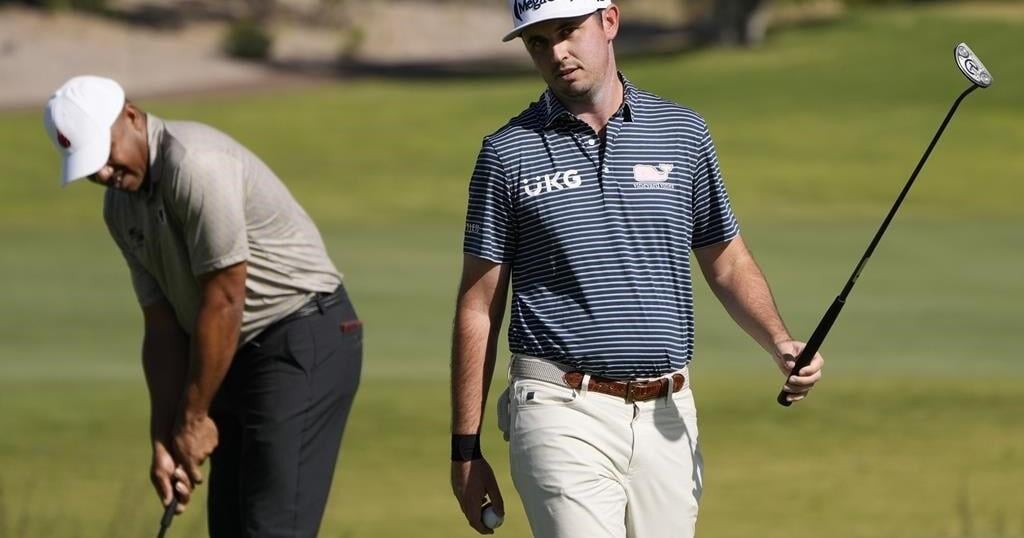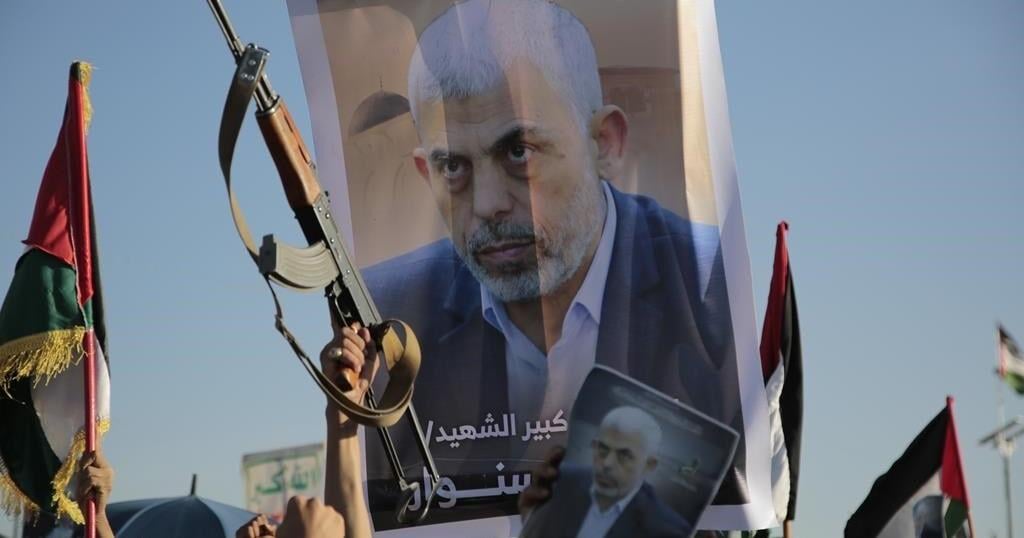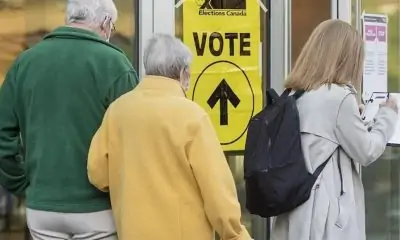LAS VEGAS (AP) — Former U.S. Open champion Gary Woodland finished 54 holes of the wind-delayed Shriners Children’s Open knowing he’ll have his best chance at winning since brain surgery more than a year ago. Best of all Saturday was being finished.
Woodland had three birdies over his final six holes and extended his bogey-free streak to 28 holes in polishing off a 6-under 65 that gave him a share of the clubhouse lead with Las Vegas resident Kurt Kitayama, who also had a 65.
They trailed J.T. Poston and Doug Ghim by one shot when play was suspended by darkness. Thirty of the 66 players who made the cut earlier Saturday did not finish.
Poston had an eagle during his closing stretch of the second round for a 65, and his only sub-par hole in the third round was an eagle on the par-5 ninth. It put him at 15-under par through 13 holes. Also at 15 under was Ghim, who had four straight birdies and was facing a five-foot par putt on the 17th hole when it was too dark to continue.
Woodland had surgery in September 2023 to remove a lesion on his brain, situated on a tract that caused fear and anxiety. It’s been a long road back of making progress with his health, getting dialed in on the right medication and trying to get his game in order.
He also went back to Randy Smith, the PGA Hall of Fame swing coach in Dallas. Now Woodland is sensing the pieces coming back together.
“I feel a lot better for one,” Woodland said. “That’s a huge help. But I’ve seen some signs. I’ve been back with Randy Smith for a couple months now. I am starting to drive it better, iron play, controlling the golf ball like I haven’t in a long time, which is nice. Then putts start going in, start putting some good scores up.
“I’m excited and happy to be here — and really happy to finish tonight so I can get some sleep tomorrow.”
The third round was to resume at 8 a.m., and Woodland likely will start around 11 a.m. That beats getting up before dawn, which he already has had to do twice this week.
Next to be determined is where he stands.
Harris English and Alejandro Tosti of Argentina also were at 14 under with four holes to play, including the reachable par 4 and the easiest of the three par 5s. Six other players were at 13 under and still had holes to play.
Taylor Pendrith of Richmond Hill, Ont., only completed 13 holes on Saturday and sits two shots back of the leaders. Nick Taylor of Abbotsford, B.C., is tied for 44th at 5 under. Ben Silverman of Thornhill, Ont., is tied for 61st at 3 under.
The wind has calmed substantially from Friday, when gusts approached 50 miles per hour and led to a four-hour delay that caused the stop-and-start and the last two days being suspended because of darkness. A TPC Summerlin course that was all about hanging on is now back to being a test of who can make the most birdies.
“Conditions will be pretty easy. I think you saw that with some of the scores,” Poston said. “Guys are making birdies. So I think it’s just trying to stay aggressive but also stay patient if the putts don’t fall early because there is a lot of holes left.”
The second round didn’t end until about noon Saturday and the cut was at 3-under 139. Among those who missed was Tom Kim, the two-time defending champion who was trying to become the first player since Steve Stricker at the John Deere Classic (2009-11) to win the same PGA Tour event three straight years.
Also missing the cut were the three winners in the FedEx Cup Fall — Patton Kizzire, Kevin Yu and Matt McCarty.
___
AP golf:


























